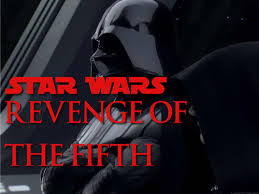Click here to return to Blog Post Intro

photo credit: black_aze The Dark Side… via photopin (license)
Approach #1: Creating a Toxic Culture through the Blame Game
Darth Vader, the Supreme Commander of the Imperial Forces, was charged with building a Death Star—an incredible battle station and super-weapon, capable of destroying an entire planet with its powerful superlaser. When construction was behind schedule, Darth Vader wanted to know who was responsible. He quickly held his leader accountable…transferring leadership by “choking” the leader who failed. Darth Vader strategically used his special choking powers to squelch dissent and discussion.
This led to a culture of fear and intimidation among the Imperial Forces. Problems were seen as individual mistakes…which were punishable by death. This use of fear kept team members from speaking up.
As a result, the Rebel Alliance found a weakness in the battle station, and Luke Skywalker ultimately took it down. Fans of the Sith are left to wonder, “Could a different leadership style have produced a different organization culture with a different outcome?”
Approach #2: Crisis Management through Directive Leadership
Han Solo, Space Pirate and pilot of the Millenium Falcon, used directive leadership when the Imperial Forces attacked his spaceship carrying Princess Leia and Luke Skywalker. Solo even shouted, “We are under attack; I give the orders!” This was not a time for collaboration, feedback, or input. Han Solo needed to use the following characteristics of Directive Leadership:
- The leader tells followers what he or she wants them to do
- The leader explains “How” the task should be accomplished
- Followers have little opportunity to think or decide by themselves
- Every move is controlled
This is an appropriate leadership style for war and war-like situations. The results? Han Solo ultimately steered his crew clear of danger.
Approach #3: Management by Objectives
Admiral Ackbar served as the Rebel Forces’ Chief Tactician, designing the attack on the Death Star in the very first Star Wars movie. His objective was clear: destroy the enemy base. Frankly, he was more interested in the final results than in the method for achieving them.

A Management-by-Objectives approach uses the following:
- The leader explains the results expected
- The leader defines the framework where action should take place
- The leader identifies the resources (people, money, and equipment) needed
- The leader explains the consequences if the objective is reached or not
- The leader explains the timing
In the case of Star Wars, Admiral Ackbar’s plans worked as designed. Luke Skywalker—a young Jedi knight—used the Force to fire the missile that destroyed the Death Star in an exciting climax to the first movie!
Approach #4: Inclusive Leadership Generates Innovation

Master Jedi Yoda shows the ultimate leadership style…always leading with more questions than answers. When he is looking for a hidden planet, he asks if any of his students or protégés have ideas. An inclusive approach to leadership is characterized by:
- Doing something especially and uniquely for another person.
- Considering other people as unique, according to their interests and motivations
- Giving others the opportunity to shine
After more than 900 years, certainly Yoda had more answers than anyone around him. But his leadership was always marked by having his followers find the answers themselves. This led to greater buy-in and ownership…and yes, greater creativity and innovation from his followers.
Ultimately, the Jedi movement became stronger because of those who came after Yoda…and he recognized that… His legacy would only be as strong as his followers…
What about you? What are you doing to leave a leadership legacy?
As you consider these vastly different leadership styles, ask yourself a few questions:
- Which style do you prefer?
- On “day one” with a brand new team, what style would you pick and why?
- What’s the best style?
Hopefully, you recognize that the “best style” depends… We need to adapt our management and leadership styles to our followers and to the context…
May your leadership style serve you well as you shoot for the stars!
And remember, tomorrow is Revenge of the Fifth…

